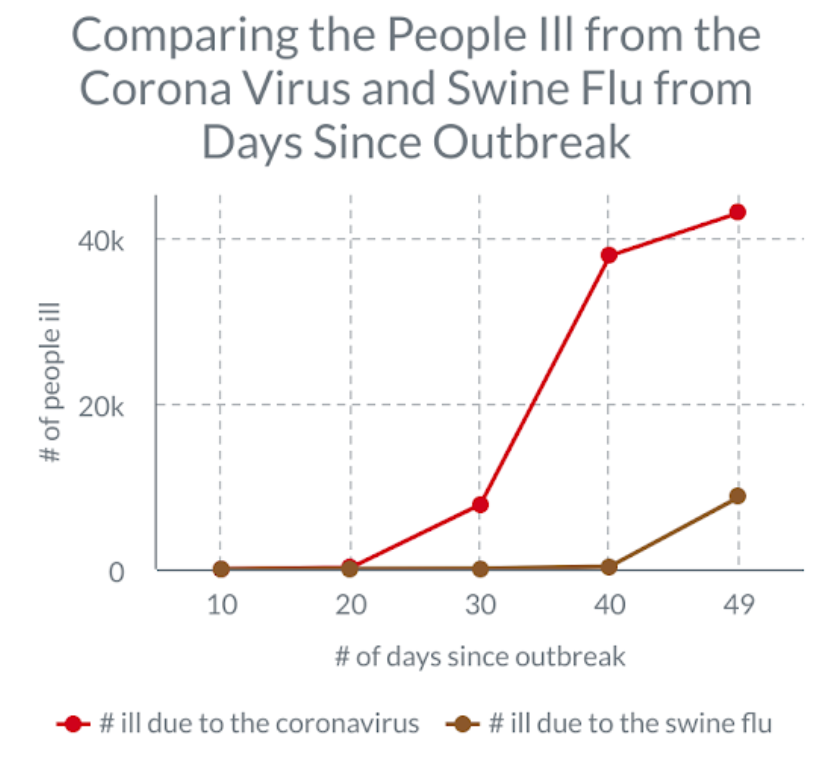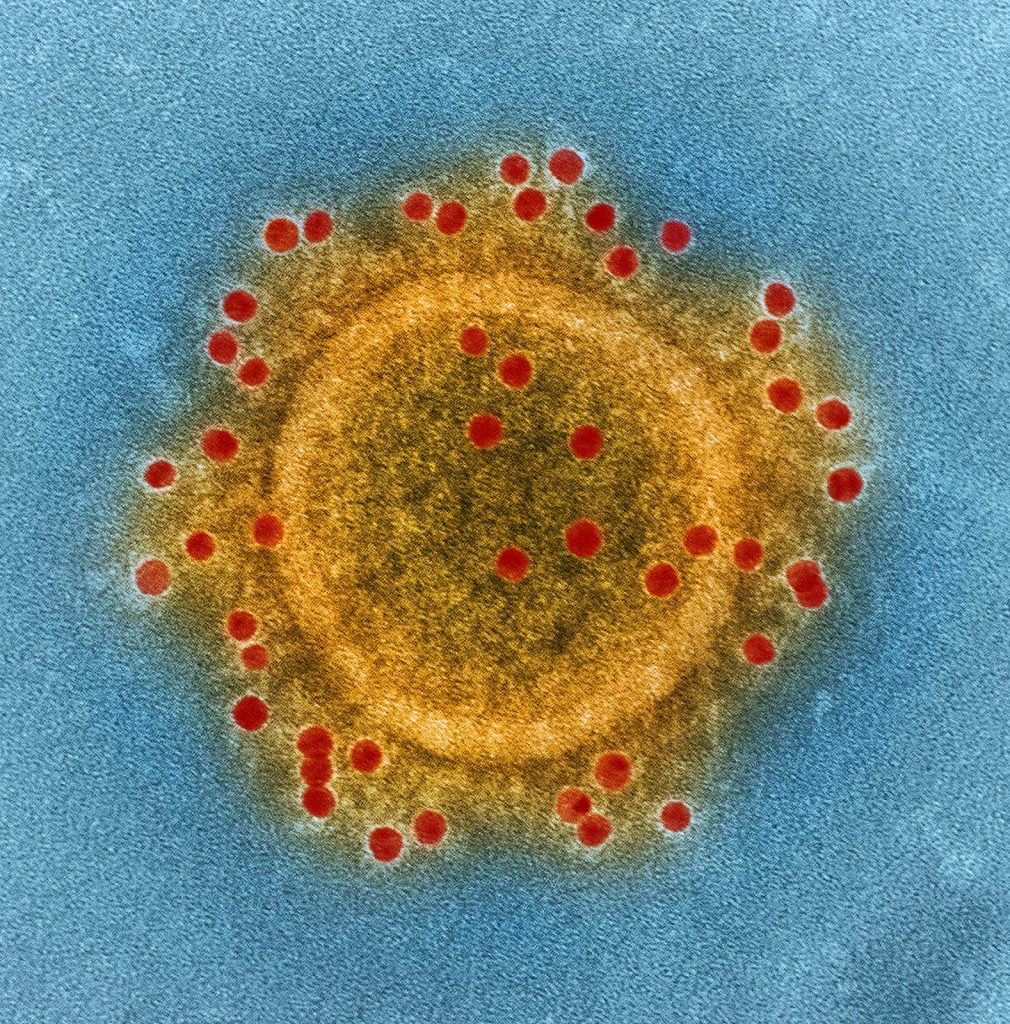By Z. Krumwiede, S. Folk, L. Daniel, A. Brandau, and K. Guma.
How do the COVID-19 Virus and Influenza Compare?
Symptoms
The symptoms of the COVID-19 virus and Influenza are very similar. They can be characterized by a fever and coughing, however influenza is not defined by a fever. Furthermore, both have common symptoms of overall tiredness and fatigue.
Mortality Rate
The mortality rates between the COVID-19 virus and the flu are very similar. The mortality rate of the COVID-19 virus has recently been raised to 3.4% after being 2% for months before. However, the flu has a mortality rate of 2.3%.
Spread
The COVID-19 virus and the common influenza spread in very similar ways. To get the virus, one must come in contact with contaminated bodily fluids from a person who contracts the virus. Examples of these bodily fluids are: mucus and saliva.

By L. Daniel. Created using Piktochart.
What is the Coronavirus? What are the symptoms? Is it more prone or susceptible to specific groups of people?

A Coronavirus is any virus belonging to the Coronavirdae family. All viruses in the Cronaviridae family have a “crownlike” or “coronal” look due to the Glycoprotein spikes on its outer shell, which is how the virus gets its name. There are many types of the Coronavirus. The most recently discovered strands of the virus are, SARS, MERS, and SARS-CoV-2. SARS is a highly contagious respiratory virus that emerged in 2002. It jumped from bats to humans and infected roughly 8,000 people worldwide. The symptoms of SARS are fever, coughing, aches, and trouble breathing. MERS (Middle East respiratory syndrome) emerged in 2012 and is possibly linked to the camel. The numbers of people who contracted the virus are not specified; however, the symptoms of MERS are very similar to the symptoms of SARS. Finally, SARS-CoV-2 is the most recent outbreak of a coronavirus. SARS-CoV-2, which causes COVID-19 or coronavirus disease, is very similar to SARS and initially emerged in Wuhan, China in a community of people who work in a seafood and animal market. The virus is highly contagious and quickly infected other people in the Wuhan area. Symptoms of COVID-19 are fever, coughing, and shortness of breath, and there is yet to be an injection or medication to prevent the spread of the disease or to cure those infected.
How has the media reacted to the CoronaVirus? How has it reacted to Influenza?

The media has unintentionally been portraying the COVID-19 virus incorrectly. It began when it was first called the “Coronavirus,” instead of it’s real name, COVID-19. This portrayal has led to society referring to the pandemic as the Coronavirus instead of the actual medical term. This is significant because there have been Coronaviruses in the past and could be more in the future. With the new broad term, that refers to the outbreak that began in 2019, it is hard to differentiate what strand of the coronavirus someone is talking about. Furthermore, other articles have been misleading, racist, and some have included racial stereotyping because of the origin of the virus being in China. This unfortunate start has led to the idea that all Chinese people could have the virus and to stay away from Chinese or Asian people all together. In addition, the COVID-19 virus has a mortality rate of about 3.4%, but people have been acting as though everyone who gets the virus dies.
As for Influenza, it is hardly talked about anymore as a serious concern, and is now understood as more of a seasonal thing that everyone could get. In society today, many people seem to get their flu shot and move on and hope that they do not get the flu. Unlike the COVID-19 virus, Influenza does not have the same racial stigma, because anyone can catch it because it is so common. Although no one is safe from the COVID-19 virus either, because of its origin in China, people believe that they should steer clear of Chinese people. This could either have to do with the time that Influenza has been around or with the recent introduction to the COVID-19 virus, and the worry that comes with the introduction of a new and unpredictable sickness.